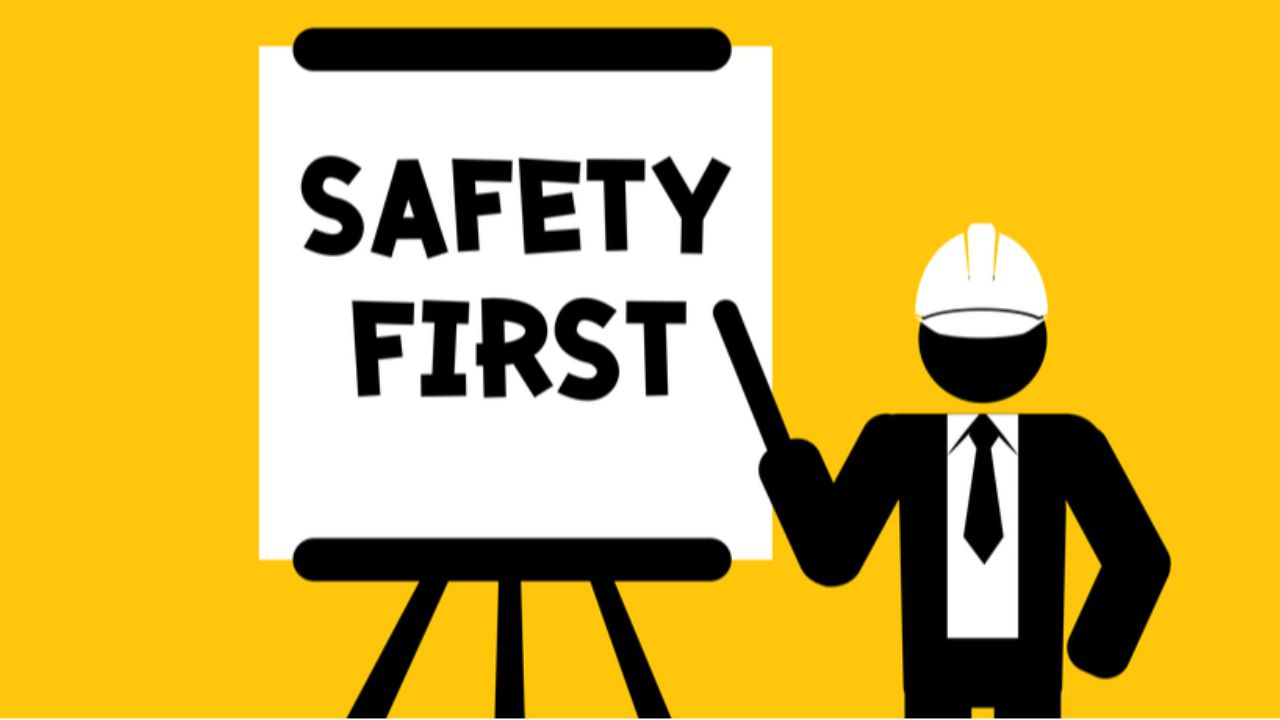7 Essential Safety Tips for Work to Boost Team Performance
Safety at work is crucial for a successful team. When everyone feels safe, they work better and faster. However, people sometimes forget safety rules, which can lead to accidents.
To keep everyone on their toes, it’s important to use safety tips for work. Knowing what to do in dangerous situations boosts confidence and helps the team work together effectively. This confidence not only enhances teamwork but also makes coming to work more enjoyable.

Good safety awareness also means everyone knows the risks around them. For example, wearing helmets, gloves, or special shoes can protect them from harm. If everyone knows and follows the safety tips, fewer accidents will happen. It also means there will be less time lost on fixing problems. This keeps the work going smoothly. So, sharing safety tips with the team is smart. It shows that everyone cares about each other.
When a team works in a safe place, they focus better. They don’t worry about getting hurt. This focus leads to higher performance and better results. Also, safety tips should be simple and easy to remember.
For example, “Look before you lift,” or “Wear your gloves.” Tips like these help everyone stay alert. So, learning these top seven safety tips can boost the team’s awareness. They become more careful and perform better. With safety rules in place, everyone can work happily and safely.
1. Conduct Regular Safety Training
Regular safety training is very important for every team. It helps everyone remember what to do to stay safe. When team members learn about safety often, they keep their skills sharp. This is like keeping tools ready for use. If people do not practice safety rules, they might forget them. So, regular training keeps safety fresh in their minds.
Ongoing education means learning never stops. Just like in school, where you learn new things every day, safety training should be the same. Teams need to learn about new safety rules or equipment. This keeps everyone prepared for any changes.
For example, if there is a new machine in the workplace, everyone should learn how to use it safely. This way, they avoid accidents and work better together.
To make safety training stick, it should be fun and engaging. No one likes boring classes, right? So, using games, videos, and role-playing can help people remember better. These methods make training fun and help people pay attention.
For example, a safety quiz game can make everyone excited to learn. When training is interactive, everyone gets involved. They ask questions and share ideas. This makes the learning experience richer and more memorable.
Also, keeping training short and simple is good. Long sessions can be hard to follow, and people might lose focus. But when training is clear and easy to understand, everyone learns faster. Plus, repeating key safety tips often helps everyone remember them.
Regular safety training keeps the team strong and alert. It shows them how to stay safe and work well. So, make safety training a fun part of work. It will help the team stay safe and perform their best every day.
See Also: Top Tips for Choosing Mechanical Contractors in Fort Worth
2. Implement Clear Communication Channels
Clear communication is key to keeping everyone safe at work. When team members talk openly about safety, they help each other stay aware of dangers. This open dialogue allows everyone to share their thoughts and concerns.
For example, if someone sees a wet floor, they can tell others to avoid it. This simple act can prevent accidents. When people feel safe to speak up, they become more involved. They know their ideas matter. This builds trust and makes the team stronger.
Using technology can also help improve safety communication. Tools like mobile apps or walkie-talkies make it easier for teams to share safety tips quickly.
For example, if there’s a fire drill, a quick message can alert everyone. This keeps everyone informed and ready to act. Apps can also send reminders about safety rules or updates. This way, no one forgets important information. Even a digital checklist can help team members remember safety steps before starting a job.
Moreover, technology makes it easy to report problems right away. For instance, if someone notices a broken ladder, they can use an app to report it. Then, the problem can be fixed faster. This quick action prevents accidents and keeps the workplace safe. Communication tools also allow managers to share safety policies and guidelines easily. When everyone knows the rules, they follow them better.
Clear and open communication about safety tips for work creates a safe environment. It keeps everyone aware of their surroundings. Combining open dialogue with technology enhances this process, helping teams stay connected and informed. This ensures that everyone can focus on their tasks safely and effectively. So, make use of these tools to maintain strong communication and prioritize safety.
3. Encourage a Culture of Reporting
Encouraging a culture of reporting is very important for safety. When people feel safe to report problems, everyone benefits. But, this only works if there is a non-punitive environment. This means no one gets in trouble for speaking up.
If someone sees something dangerous, like a broken chair, they should feel free to report it. They should not worry about getting blamed. This open approach helps fix problems quickly. It also makes everyone feel safe and valued.
A non-punitive environment shows that safety is more important than blame. When people are not scared to report issues, they are more likely to speak up. This leads to fewer accidents.
For example, if a worker sees a spill and reports it, the team can clean it up fast. This prevents slips and falls. So, making it easy and safe to report problems is key to a safe workplace.
Recognizing and rewarding those who report safety issues is an effective safety tip for work. When someone reports a safety concern, they help protect the entire team. So, it’s important to thank them. Managers can give a “Safety Star” award or a small prize to encourage more reports. This demonstrates the company’s commitment to safety and appreciation for teamwork. Simple rewards can motivate others to stay vigilant and share their concerns.
When reporting is part of the culture, it creates a safer place to work. Team members watch out for each other and feel proud to help. This builds a strong, caring team.
By creating a non-punitive environment and recognizing safety efforts, everyone feels more responsible for their safety. So, encourage a culture where reporting is easy and celebrated. It helps the team stay safe, strong, and ready to perform their best.
4. Utilize Personal Protective Equipment (PPE) Effectively
Using Personal Protective Equipment (PPE) is very important for staying safe at work. PPE includes things like helmets, gloves, goggles, and masks. But it’s not enough to just have the gear; you must use the right PPE for the job.
For example, workers in construction need helmets to protect their heads, while those handling chemicals need gloves and goggles. Knowing which equipment to use keeps everyone safe from different dangers. This way, each team member can do their job without getting hurt.
Understanding the right PPE for each task is key. If someone wears the wrong type of gloves, they might not be protected properly.
So, before starting any job, it’s important to check if you have the correct safety gear. Ask questions like, “Do I need a helmet for this task?” or “Will these goggles protect my eyes from dust?” These checks make sure that everyone is ready and safe.
Proper maintenance and storage of safety gear are also crucial. If PPE is dirty or broken, it won’t protect well. For example, a cracked helmet or torn gloves can put a worker in danger.
So, always clean and inspect safety gear after each use. If something is damaged, it should be fixed or replaced right away. Storing PPE in a safe and dry place keeps it in good condition. This way, it’s always ready to use when needed.
Using PPE effectively is one of the top safety tips for work. It shows that a team values safety and helps everyone stay aware of risks. Properly using and maintaining the right gear ensures that the team can work confidently.
So, always choose the right PPE, check it regularly, and store it properly. These practices keep everyone safe and focused on performing their best work.
5. Perform Regular Safety Audits and Inspections
Performing regular safety audits and inspections helps keep everyone safe at work. These checks help find hazards before they cause problems.
For example, if you spot a loose wire or a slippery floor, you can fix it before someone gets hurt. Finding these issues early helps prevent accidents and keeps the workplace safe.
Safety audits involve checking all the equipment and areas where people work. Look for anything that might be dangerous. For instance, check if fire extinguishers are in the right place and working well. Also, make sure that emergency exits are clear and easy to use. This way, everyone knows what to do in an emergency.
Involving team members in safety walkthroughs is a key part of effective safety tips for work. Those who work in the area daily know it best and can spot issues that others might miss. By walking through the workplace together, everyone can discuss and address safety concerns.
For example, they might identify a blocked walkway or a machine in need of repair. Collaborating to find and fix these problems makes the workplace safer for everyone.
During these safety checks, it’s also good to talk about what was found and how to fix it. This keeps everyone informed and reminds them to stay alert.
Regular safety audits and inspections show that the team cares about each other’s well-being. It helps build a strong safety culture where everyone looks out for one another. So, remember to do these checks often and involve the whole team. This keeps everyone safe and helps everyone perform their best at work.
6. Develop a Comprehensive Emergency Response Plan
Creating a comprehensive emergency response plan is essential for keeping everyone safe. This plan helps the team know exactly what to do during an emergency. Here’s how to make an effective emergency protocol:
First, identify the types of emergencies that might happen at work. These could be fires, earthquakes, or chemical spills. Each type of emergency needs its own set of actions. For example, during a fire, everyone should know how to evacuate the building quickly. Write down clear steps for each type of emergency. Make sure everyone understands these steps.
Next, designate roles for team members. Decide who will help with evacuations, who will call emergency services, and who will check if everyone is safe. Assigning these roles ensures that everyone knows their responsibilities during an emergency. Make a list of these roles and share it with the team.
Once the plan is ready, practice it with drills and simulations. Regular drills help everyone get used to the emergency steps.
For example, do a fire drill once a month to practice leaving the building quickly. During these drills, everyone should follow the steps just like in a real emergency. Simulations can also help, like pretending there is a chemical spill and practicing how to respond.
Drills and simulations make sure everyone feels confident and knows what to do. They help identify any problems with the plan so they can be fixed. This preparation makes real emergencies less scary and helps everyone act quickly.
A good emergency response plan and regular practice keep the team safe and prepared. So, create a clear plan, practice with drills, and make sure everyone is ready to handle emergencies effectively.
7. Promote a Healthy Work-Life Balance
Promoting a healthy work-life balance is important for keeping everyone safe and performing well. When people are tired or stressed, it’s harder for them to focus on their work. This can lead to mistakes and accidents.
For example, if someone is very tired, they might not notice a spill on the floor. This can cause them to slip and fall. So, it’s important to help team members stay balanced and healthy.
One way to support your team is by implementing wellness programs. These programs can include activities that help reduce stress and improve health.
For instance, you could offer yoga classes, meditation sessions, or even healthy snacks at work. These activities help people relax and feel better. When team members are less stressed and more rested, they work better and make fewer mistakes.
Another important part of promoting work-life balance is encouraging breaks. Make sure everyone takes regular breaks during their workday. Short breaks help people recharge and stay focused.
For example, a 10-minute break can make a big difference in how someone feels and works. Also, support flexible working hours or options for working from home. This helps team members balance their jobs with their personal lives.
When people are happy and healthy, they work better and are more careful. A good work-life balance helps everyone stay alert and perform their best. So, make sure to support wellness programs and encourage breaks. This helps keep the team safe and focused, and everyone can enjoy coming to work every day.
Conclusion
In conclusion, keeping your team safe is very important. We talked about seven key safety tips to help everyone work better and stay protected. First, conduct regular safety training to keep skills sharp. Next, use clear communication channels to share safety information.
Encourage a culture where reporting problems is easy and welcomed as part of essential safety tips for work. Always use the correct Personal Protective Equipment (PPE) and keep it well-maintained.
Perform regular safety audits to catch issues before they escalate. Develop a solid emergency response plan and practice it with drills. Finally, promote a healthy work-life balance to ensure everyone stays focused and stress-free.
Now it’s time to put these tips into action. Start improving your team’s safety awareness today. Try these tips and see how they make a difference. Your team will be safer and work better.
We’d love to hear from you! Please leave a comment below with your thoughts or any safety tips you have. And don’t forget to share this amazing information with your friends. Together, we can all create safer and happier workplaces.







